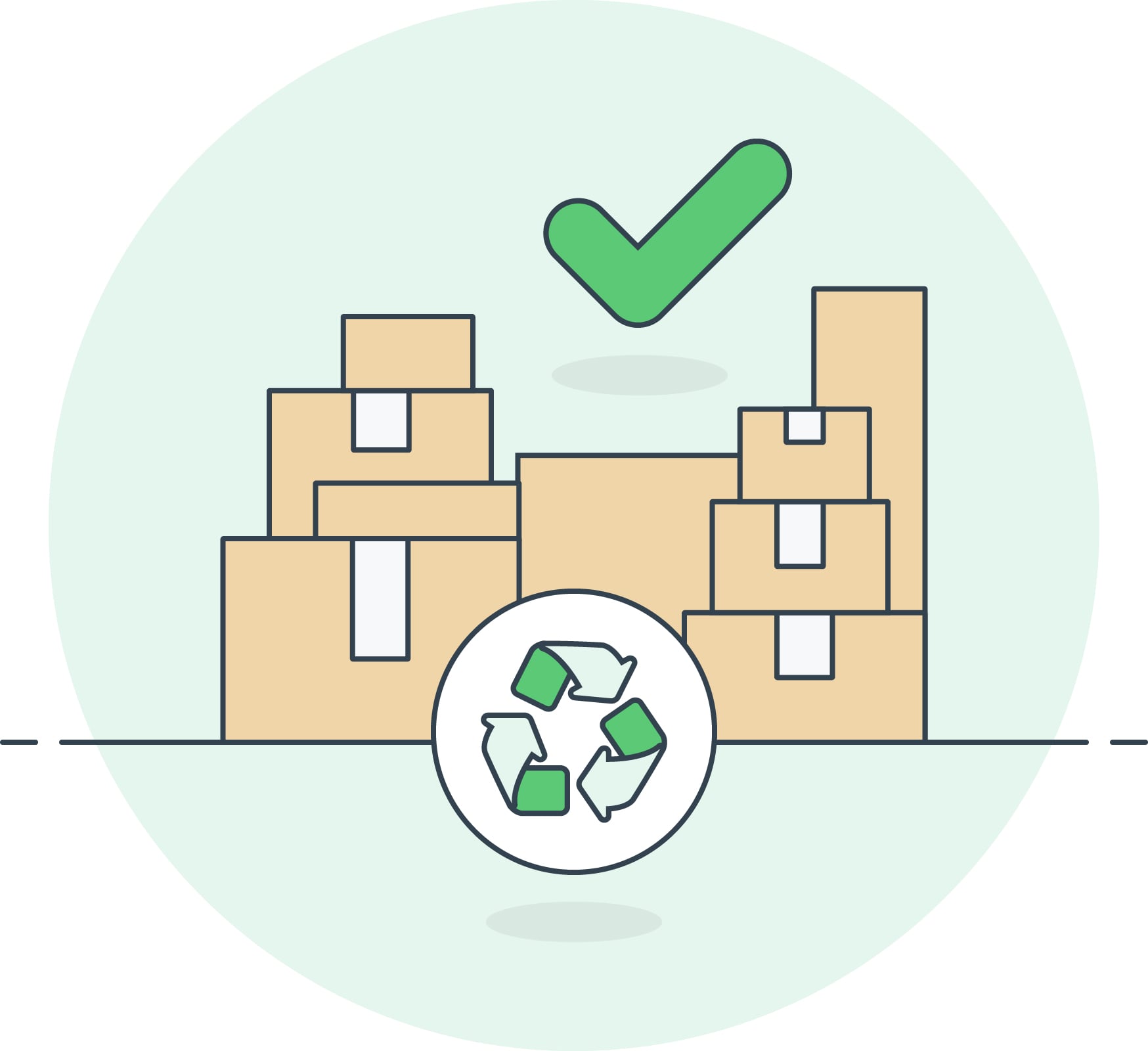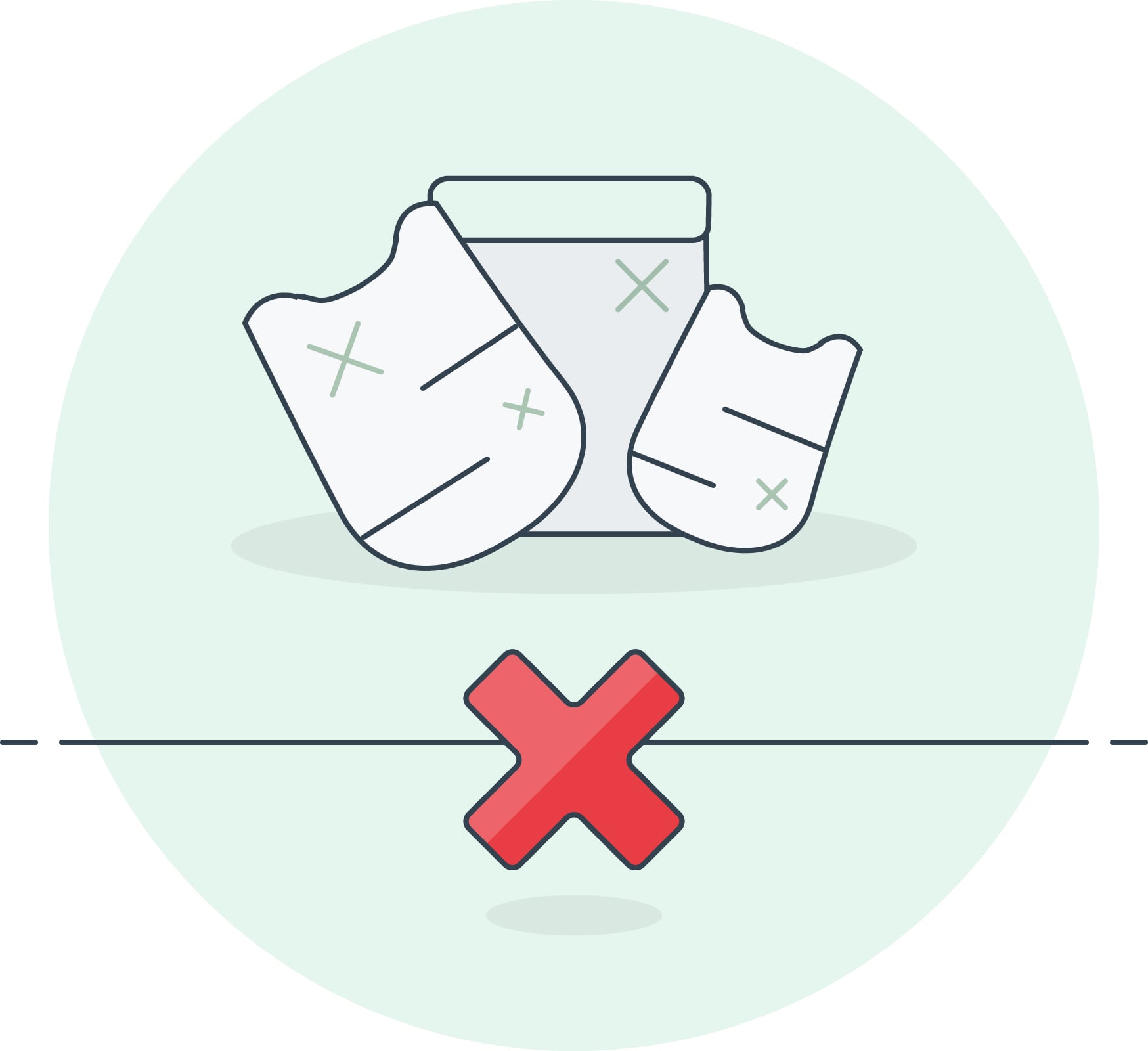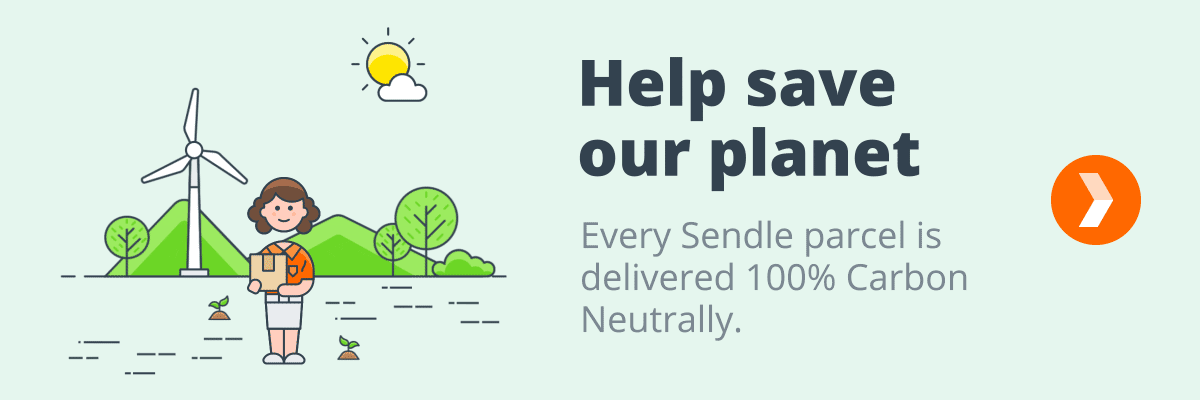In today’s climate-conscious world, companies, not-for-profits, and individuals are all looking for ways to cut their carbon footprint and consciously lessen their impact on the planet.
When it comes to eCommerce, one of the largest contributors is packaging. Luckily, this is one of the things that online retailers have some modicum of control over.
The boxes you use and the way you pack your products are relatively simple to change.
Here we’ve put together some of the most common mistakes when it comes to sustainable shipping and packaging.
Your boxes are too big

Avoid big boxes. Within reason.
It may not seem like a big deal but every extra bit of surface area inside a box has to be filled up with something—bubble wrap, foam peanuts, old newspapers, a bunch of feathers—to protect it in transit.
The more non-merch stuff you’ve got jammed into your box, the more unnecessary damage you’re doing to the environment in the long run.
Not to mention, having to get rid of all that filler is a bummer for your customers.
Big boxes mean more volume. More volume inside boxes means more volume inside trucks and planes faster. So, fewer items can be sent via ship, plane, or truck.
Ultimately, this means contributing to more ships, planes, and trucks dumping their carbon into the atmosphere.
Read more about Sendle’s commitment to staying 100% carbon neutral
Wasteful returns and mixed packaging

Returns, in the US alone, account for a whopping five billion pounds of landfill waste and 15 million tons of carbon emissions every year. This high rate of returns from customers is a big contributor to the overall carbon footprint.
Knowing this, why not do your best to make returns as easy as possible (or more unnecessary) and use packaging that can be repurposed for return.
For instance, mailer pouches that can be resealed make returns easier, and a lot more eco-friendly.
Read more about how a good returns policy can help grow your small business.
Then there’s the scourge of mixed packaging.
This is where materials leave customers unsure about what can, or can't, be recycled. Often, the end result is the whole lot ends up in a landfill.
Instead, try using packaging that is as simple as possible and that—if it uses multiple materials—is all obviously recyclable.
Way too much plastic

We all know how bad plastic is for the planet. But nonetheless, companies continue to use tons of it in their products and packaging.
Often, the concern for many companies is cost and effectiveness. Plastic is cheap, sturdy, and reliable. Other materials can be more expensive and have untested reliability.
Still, you don’t have to ditch plastic entirely to do your bit for the planet.
Think about scaling it back where you can or moving to alternate forms of recyclable packaging like biodegradable boxes or mailer envelopes, both greener options.
Have you read our big guide to sustainable packaging?
Nobody knows you're making an effort!

Remember, customers—especially younger demographics—are increasingly attracted to companies that are getting serious about doing their bit for the environment.
While it can take some reorganizing to better help the planet, there's a big upside in promoting your firm—and its packaging—as eco-friendly.
Indeed, research has shown that a whopping 87 percent of consumers would buy from brands do good environmentally or socially (carbon-neutral shipping, anyone?).
So, make sure to highlight all your environmental details and creds on your packaging so your customers know they’re part of the solution, not the problem.
This goes for your website too. Ensure that your product listings highlight their environmental bona fides and you’ll enjoy the extra oomph that eco-consciousness can impart.
- 56% of respondents said that climate change had somewhat or fully caused them to reassess their purchasing habits, and nearly 70% said they’d set goals to purchase more sustainable products.
- 46% said packaging doesn’t factor into their purchase decisions, while 57% said they get frustrated with the amount of packaging the products they order come in.
- 64% of consumers said they’d be more likely to make a purchase from a retailer that offered compostable packaging, especially if it didn’t cost more.
- 52% said they’d be more willing to make repeat purchases or sign up for a subscription from a retailer who offered more sustainable packaging or shipping options.
Already sending your packages carbon neutral with Sendle?
If you’d like to broadcast your efforts and motivate other businesses to develop sustainable practices, why not download our 100% Carbon Neutral Delivery badge?
By adding this badge to your website or shipping page you’re acknowledging the need for careful, sustainable business and celebrating the ways in which we’re all making a difference.



